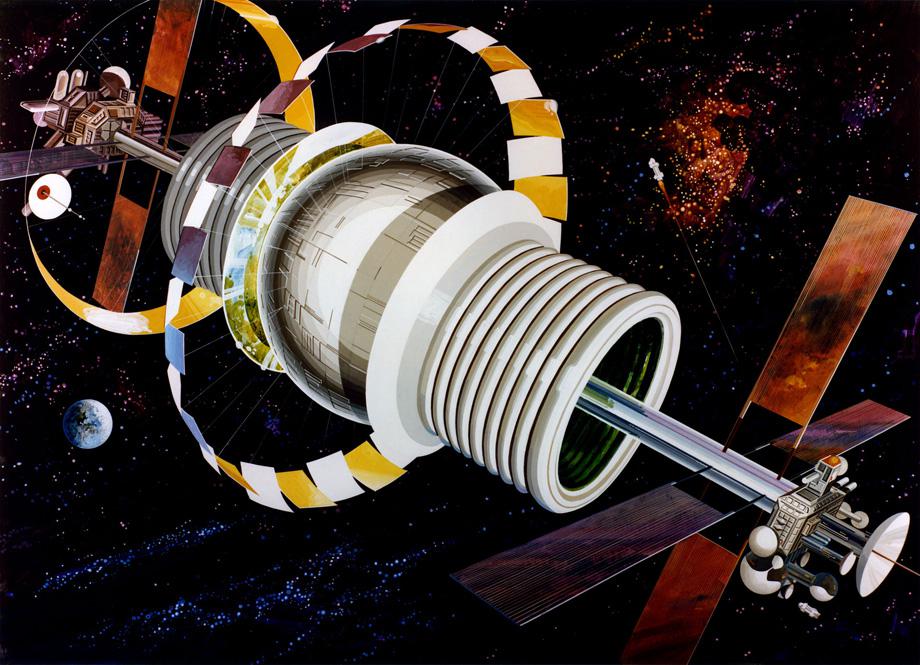Back in the 1970s, NASA’s Ames Research Center conducted three space colony studies, when man was fresh off the moon landing and colonization of space seemed imminent. As part of the project, artists were asked to render the studies’ findings in dazzling color and detail. Together, these images evoke a unique sense of time and place with stunning precision, leaving the viewer with a bizarre feeling that is simultaneously retro and futuristic.
The Bernal design featured above and below was a spherical living area that could hold about 10,000 people.
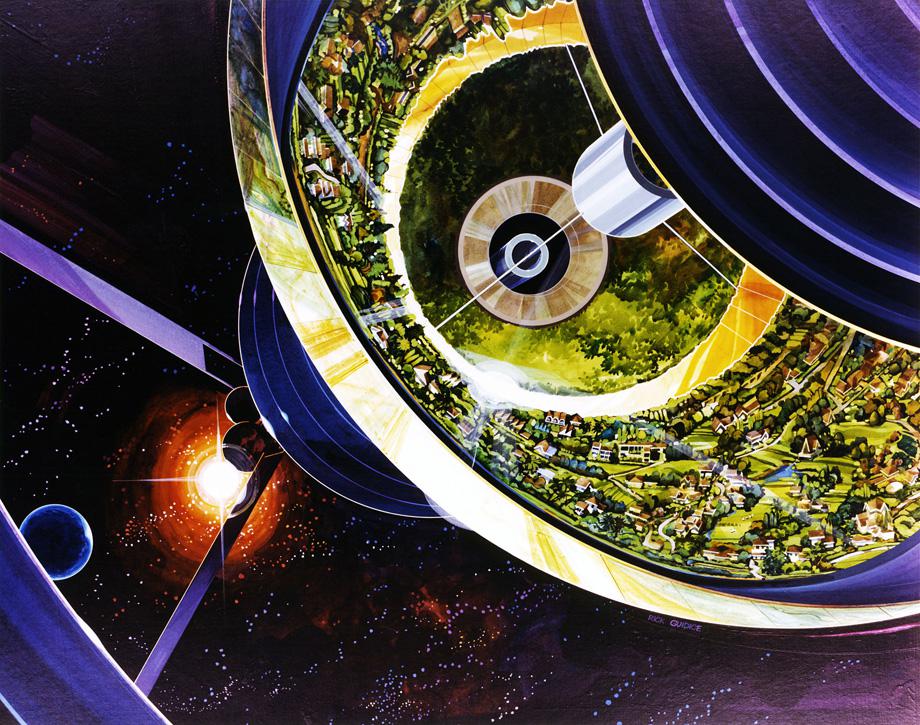
Rick Guidice/NASA Ames Research Center.

Rick Guidice/NASA Ames Research Center.
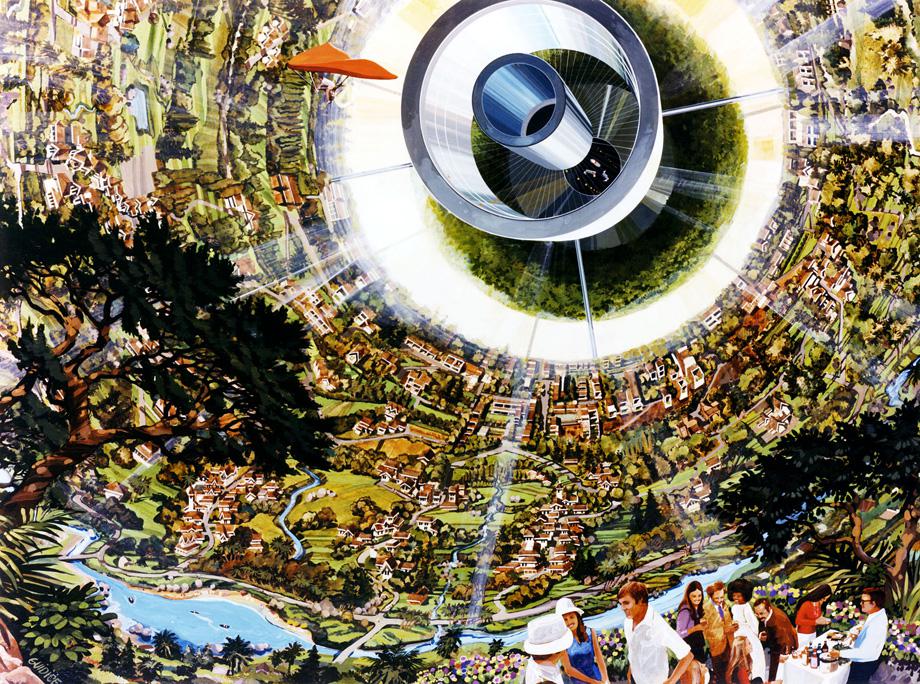
Rick Guidice/NASA Ames Research Center.
Perhaps the most famous of these circular rotating stations were those of Space Station V, depicted in the movie 2001: A Space Odyssey—which now seem brilliant: The centrifugal force created by the rotation would have an effect indistinguishable from gravity, as we can see in the scenes in which Dr. Frank Poole (Gary Lockwood) is merrily jogging around the revolving wheel of a station.
According to Phil Plait, Slate’s in-house (bad) astronomer, these space stations, or O’Neill colonies, “were a big deal” back in the late ‘60s and early ‘70s. But our very own and very real International Space Station doesn’t look like that, with its straight angles and rectilinear solar panels. Were these designs too whimsical and far-fetched?
Turns out it was because we haven’t actually tried to make space colonies like this. One of the reasons the ISS looks so different from these funky illustrations is that they have different purposes, says Plait. The ISS was purposefully designed minus-gravity to study the effects of weightlessness itself, not to provide a space home for future generations.
That is not the only reason, though. The engineering required to spin something in space is “difficult and takes a lot of know-how,” and no matter how small, any spinning station would be very expensive. And they actually have to be big “or else the Coriolis force —the same thing that makes hurricanes spin on our rotating planet— would make life hard,” Plait says. “Liquid pouring from a container would flow a bit to the side, and just standing up could make you dizzy.”
If we’re talking about long-term living in space, complete with sustainable food crops, small forests, and modest bodies of water, then these designs might still be oddly on point and beyond their time.
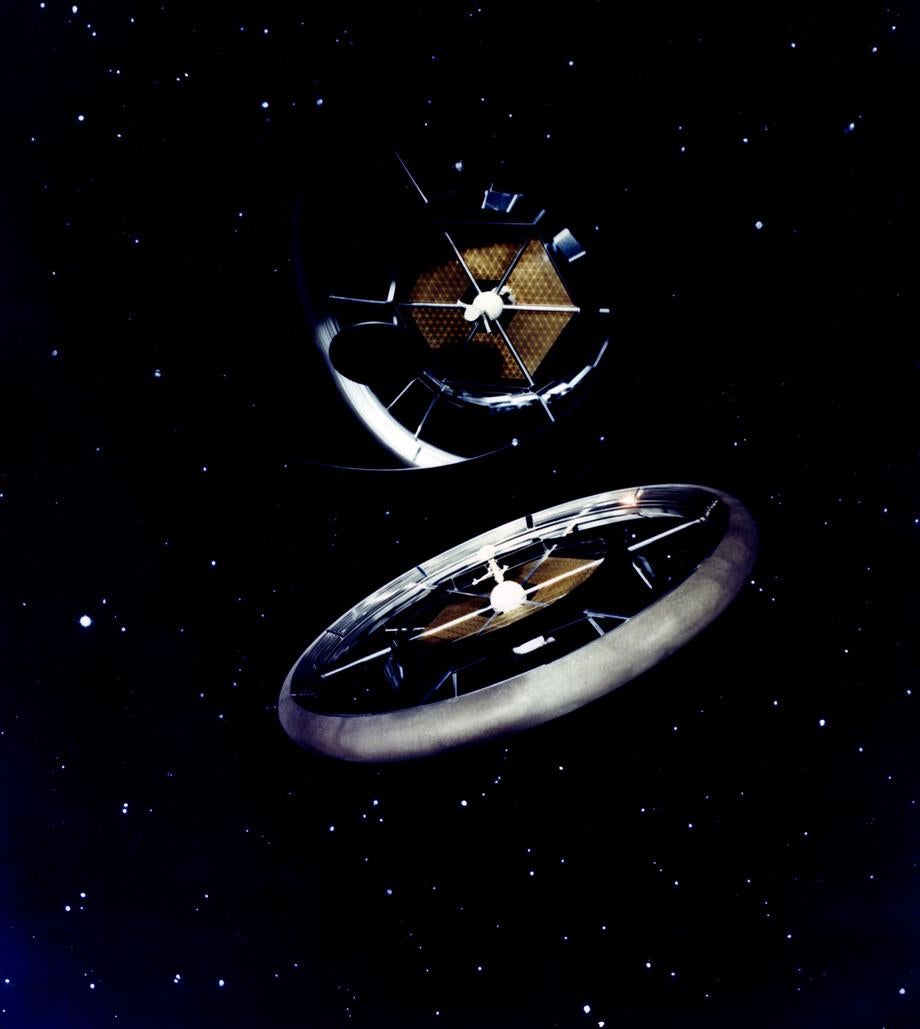
NASA Ames Research Center.
Toroidal colonies like the one above and the ones below could also house about 10,000 people.

Rick Guidice/NASA Ames Research Center.
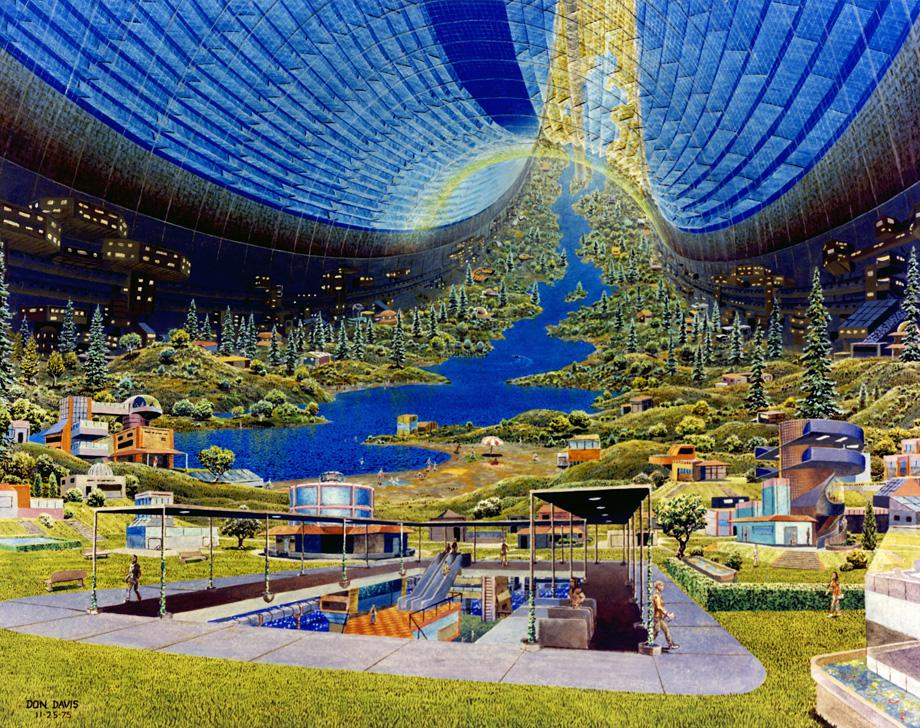
Don Davis/NASA Ames Research Center.
Cylinder colonies were the metropolis of the bunch, capable of housing more than a million people at a time.

Rick Guidice/NASA Ames Research Center.
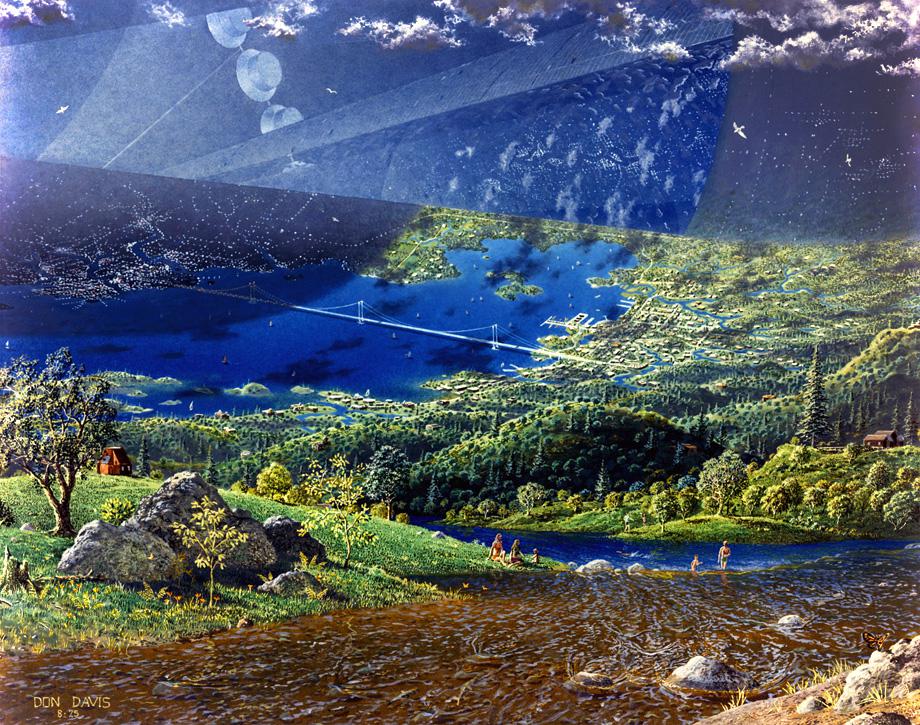
Don Davis/NASA Ames Research Center.

Don Davis/NASA Ames Research Center.
